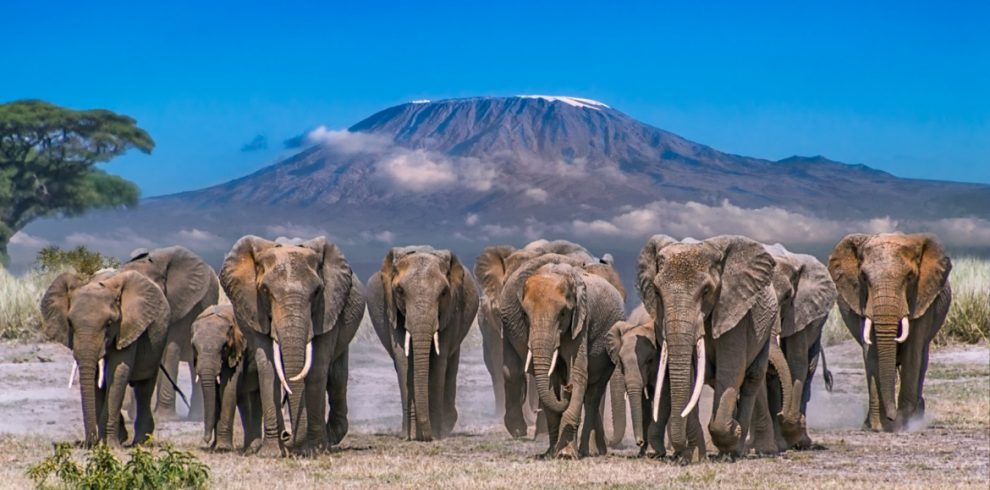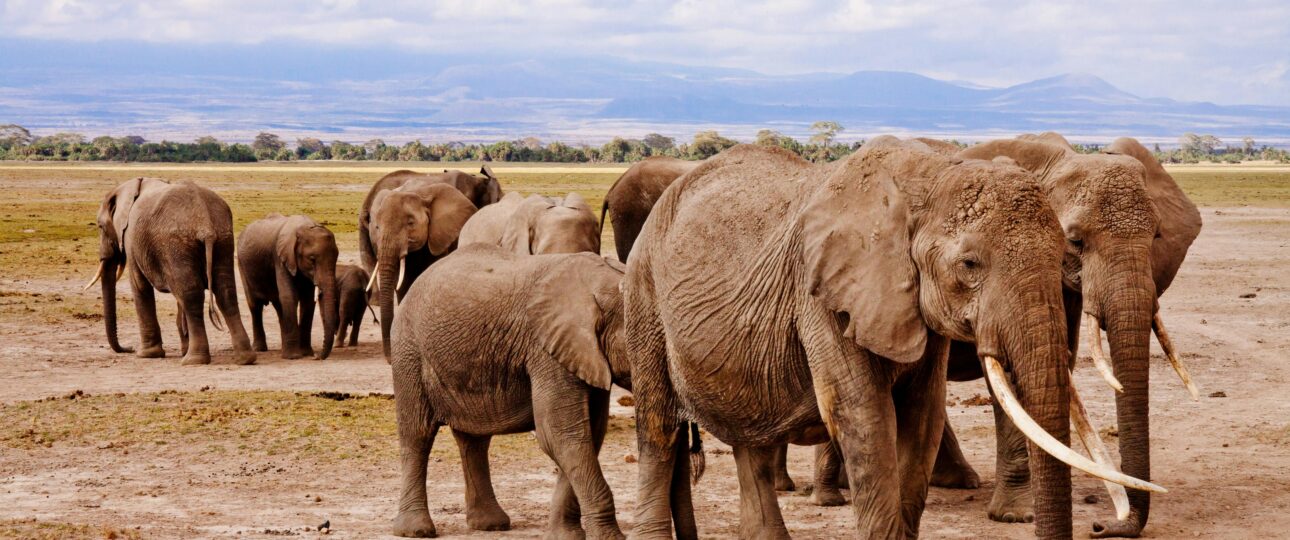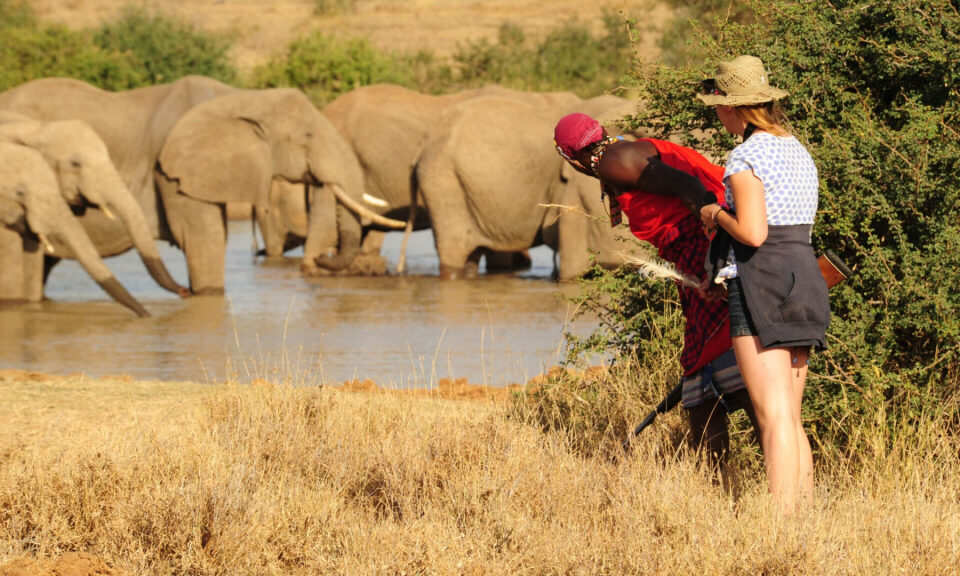- GET IN TOUCH WITH US:
- +256 753518160
- +256 777842166
- info@experiyatourcompany.com

Can I see the Big Five in Kenya?
November 17, 2025
Can I see Mount Kilimanjaro from Amboseli?
November 17, 2025What’s the difference between Amboseli and Maasai Mara?

What’s the Difference Between Amboseli and Maasai Mara?
Kenya is blessed with some of the most spectacular national parks and wildlife conservancies in the world, and among them, Amboseli National Park and the Maasai Mara National Reserve stand out as two iconic safari destinations. Both parks offer exceptional wildlife viewing, breathtaking landscapes, and authentic African safari experiences. Yet they are remarkably different in terms of scenery, wildlife density, accessibility, and overall feel. Many travelers planning a Kenyan safari often ask: What’s the difference between Amboseli and Maasai Mara? Understanding these differences will help you choose the destination that best aligns with your travel style, wildlife interests, and expectations.
This detailed guide explores Amboseli and the Maasai Mara in depth—highlighting wildlife, landscapes, activities, best times to visit, cultural experiences, and the overall safari atmosphere in each location. Whether you are planning a single-park adventure or combining both into one epic itinerary, this comparison will give you everything you need to make an informed decision.
Overview: Amboseli vs. Maasai Mara
Amboseli National Park is famous for its enormous elephant herds and jaw-dropping views of Mount Kilimanjaro. The Maasai Mara, on the other hand, is world-renowned for its big cat population, massive savannah plains, and the Great Migration. Amboseli is often described as intimate and scenic, while the Maasai Mara is vast, dramatic, and wildlife-rich on an epic scale.
Both destinations are extraordinary, but they offer uniquely different safari experiences.
Landscape and Scenery
Amboseli: The Land of Kilimanjaro
Amboseli National Park is defined by open plains framed by the towering presence of Mount Kilimanjaro—Africa’s tallest mountain. Even though Kilimanjaro sits across the border in Tanzania, its snowy peaks dominate Amboseli’s horizon. This dramatic backdrop gives Amboseli some of the most iconic photo opportunities in Africa, especially when elephants, giraffes, or zebras stroll across the plains beneath the mountain.
Amboseli’s landscapes include seasonal swamps fed by underground water from Kilimanjaro’s glaciers. These swamps attract vast herds of elephants and other herbivores during the dry season. The park’s terrain is mostly flat, making it easy to spot wildlife from a distance.
Maasai Mara: Endless Open Savannahs
The Maasai Mara features rolling grasslands, dotted acacia trees, winding rivers, escarpments, and scattered forested patches. Its diverse terrain supports an incredible variety of wildlife. The wide, open plains offer unparalleled visibility, making it one of the world’s best locations for predator sightings.
The Mara River winds through the reserve, creating dramatic cliffs and deep channels that become the stage for the famous Great Migration river crossings. The landscapes here feel wild and boundless—a cinematic display of Africa at its most iconic.
Wildlife and Animal Encounters
Amboseli: Elephant Paradise
Amboseli is one of the best places in Africa to see large herds of elephants. The park is home to over 1,500 elephants, including some of Africa’s last remaining big tuskers—elephants with enormous, ground-sweeping tusks. The elephants here are calm, photogenic, and often seen bathing, feeding, or moving across the plains in family groups.
Other wildlife in Amboseli includes:
Buffalo
Giraffes
Zebras
Hyenas
Hippos
Cheetahs
Lions (less frequent than in the Mara)
Amboseli also offers excellent birdwatching, with over 400 species recorded.
Maasai Mara: Big Cats and the Great Migration
The Maasai Mara is world-famous for its high density of big cats. Lions, cheetahs, and leopards thrive here, making predator sightings incredibly common. The Mara is often called the “kingdom of predators” due to the abundance of prey animals that support its carnivore population.
Wildlife in the Mara includes:
Lions in large prides
Leopards often found in riverine forests
Cheetahs using termite mounds as vantage points
Hyenas and jackals in high numbers
Elephants
Buffalo
Hippos and crocodiles along the rivers
The Mara is also home to black rhinos, making it an excellent destination for Big Five viewing.
The Great Migration in the Mara
Between July and October, the Maasai Mara becomes the setting for the Great Migration, where over 1.5 million wildebeest and zebras move into the ecosystem from the Serengeti. This event brings dramatic river crossings, predator encounters, and a wildlife spectacle unmatched anywhere else in the world.
Amboseli does not experience the migration, making the Maasai Mara the only choice for this iconic event.
Safari Experience and Atmosphere
Amboseli: Peaceful, Scenic, and Relaxed
Amboseli offers a quieter safari experience compared to the Mara. Although it is a popular park, its compact size and relatively lower tourist volume make game drives feel relaxed. The scenery is stunning and serene, and close encounters with elephants are almost guaranteed.
Amboseli is ideal for:
Photography lovers
Families
Travelers seeking short, easy safaris
Those mesmerized by elephant behavior
Anyone wanting scenic landscapes with Kilimanjaro views
The park’s smaller size means you can explore its major areas in two or three days.
Maasai Mara: Dramatic, Wild, and Action-Packed
The Maasai Mara offers a high-energy safari filled with dramatic wildlife interactions. Predator-prey action is common, especially during the migration season. The reserve is vast, with multiple regions to explore, each offering unique wildlife moments.
The Mara is ideal for:
Big cat enthusiasts
Witnessing the Great Migration
Photographers seeking powerful wildlife scenes
Travelers wanting multi-day, immersive safaris
Those seeking luxury lodges and conservancy experiences
The Mara’s conservancies provide off-road driving, night drives, and exclusivity not available in the main reserve.
Accessibility and Travel Logistics
Amboseli: Easily Accessible From Nairobi
Amboseli is about 4 to 5 hours by road from Nairobi. The journey is smooth, scenic, and straightforward. This makes Amboseli perfect for short trips or weekend getaways.
Flights from Nairobi’s Wilson Airport take just 40 minutes.
Maasai Mara: Slightly Farther but Very Accessible
The Maasai Mara takes 5 to 6 hours by road from Nairobi, depending on the route and lodge location. The road conditions vary, especially near the park gates.
Flying is the most popular option, with daily flights that take around 45 minutes and land at various airstrips inside the reserve.
Lodges and Accommodation Styles
Amboseli Accommodation
Amboseli has a mix of:
Mid-range lodges
Luxury lodges
Tented camps
Good examples include Amboseli Serena Safari Lodge and Tortilis Camp.
Maasai Mara Accommodation
The Maasai Mara has a much wider range of accommodations, including:
Ultra-luxury lodges
Boutique camps
Exclusive conservancy lodges
Mid-range camps
Budget-friendly campsites
The Mara’s diversity of accommodations makes it suitable for all types of travelers.
Best Time to Visit
Amboseli
Best months: June to October, January to February
These periods offer dry weather, great visibility, and excellent elephant sightings.
Maasai Mara
Best months: July to October (Great Migration)
January and February are also excellent for big cat sightings.
Because the Mara offers year-round wildlife abundance, any month is rewarding.
Cultural Experiences
Both destinations offer authentic Maasai cultural experiences. In Amboseli, the Maasai communities live close to the park, making village visits easily accessible. In the Mara, the Maasai culture is deeply intertwined with conservancy life and tourism.
Which Should You Choose?
Choose Amboseli if you want:
Big elephant herds
Kilimanjaro views
A quiet, relaxed safari
A short trip from Nairobi
Strong photography opportunities
Choose the Maasai Mara if you want:
Big cats and predator action
The Great Migration
The Big Five
Vast landscapes
Multi-day or luxury safaris
Many travelers combine both parks to enjoy the contrast—scenic beauty in Amboseli and wildlife drama in the Maasai Mara.
Book Your Kenyan Safari with Experiya Tour Company
Whether you choose Amboseli, Maasai Mara, or a combination of both, planning your safari with experts ensures an unforgettable experience. Experiya Tour Company specializes in creating tailor-made safari adventures, arranging exceptional lodges, organizing seamless transfers, and providing professional guides who know the parks intimately.
Book your wildlife safari with Experiya Tour Company today and explore Kenya’s most iconic national parks with a trusted and experienced team.



